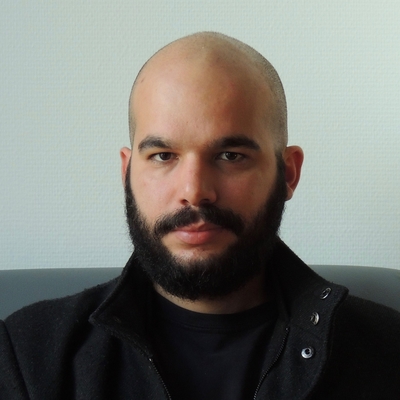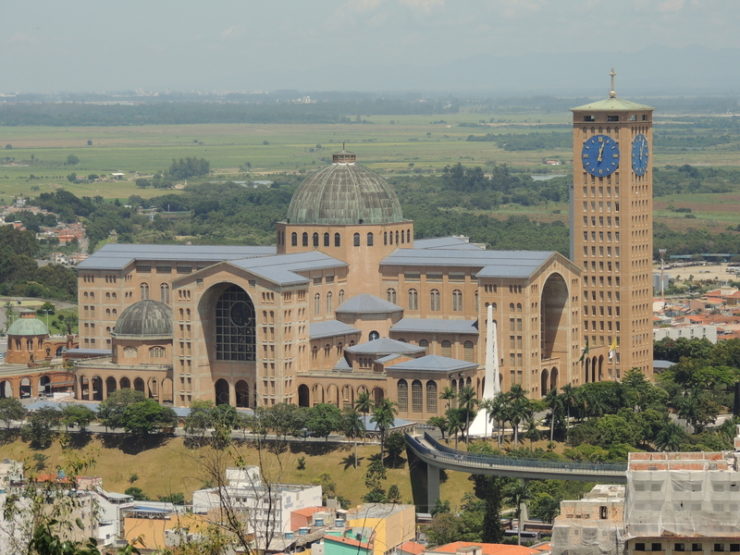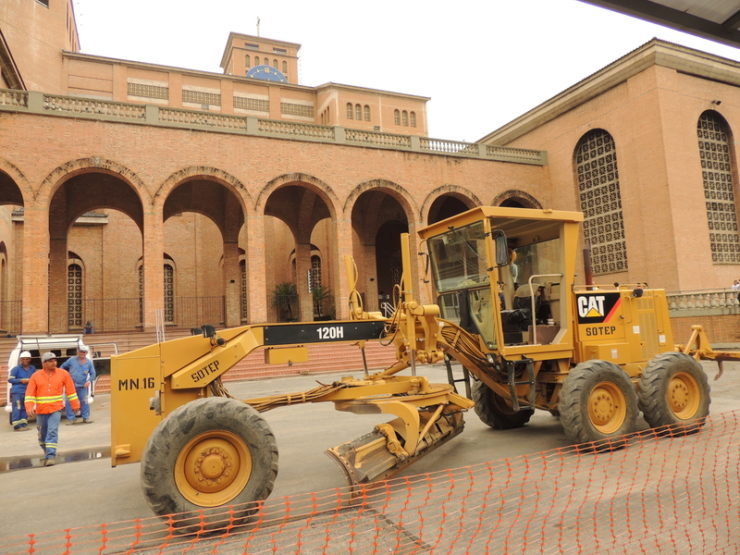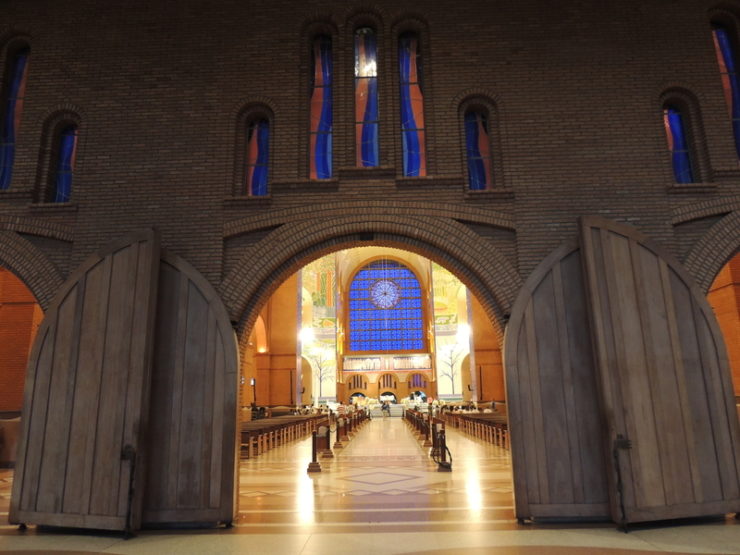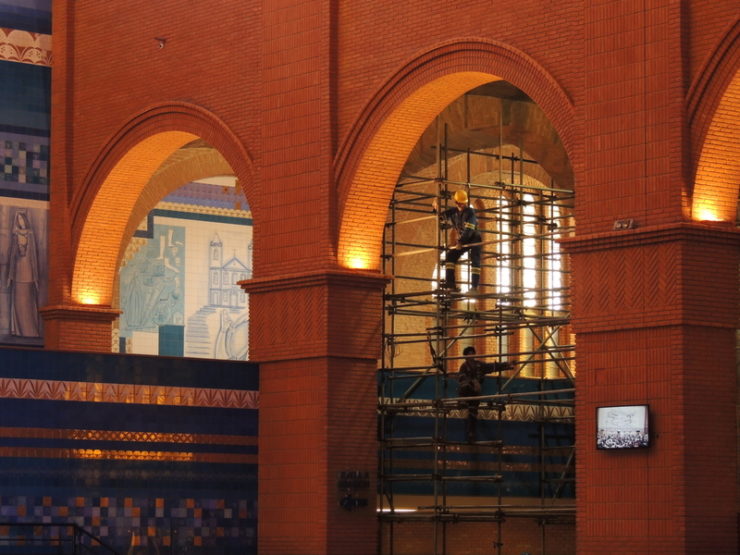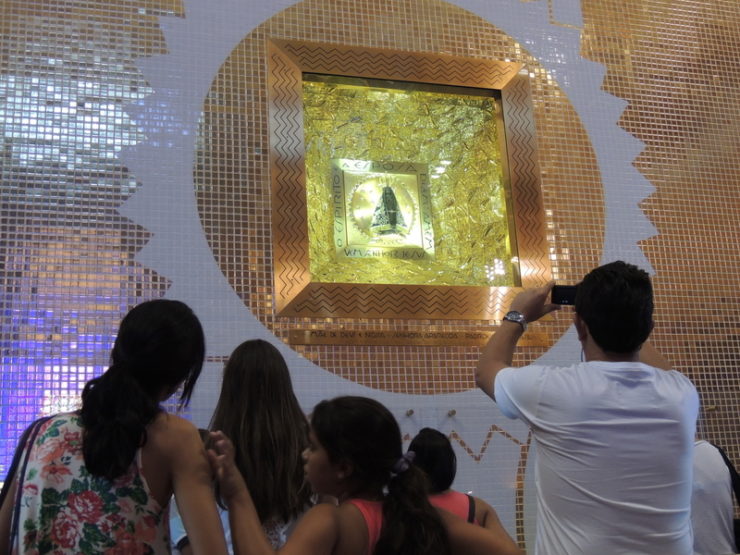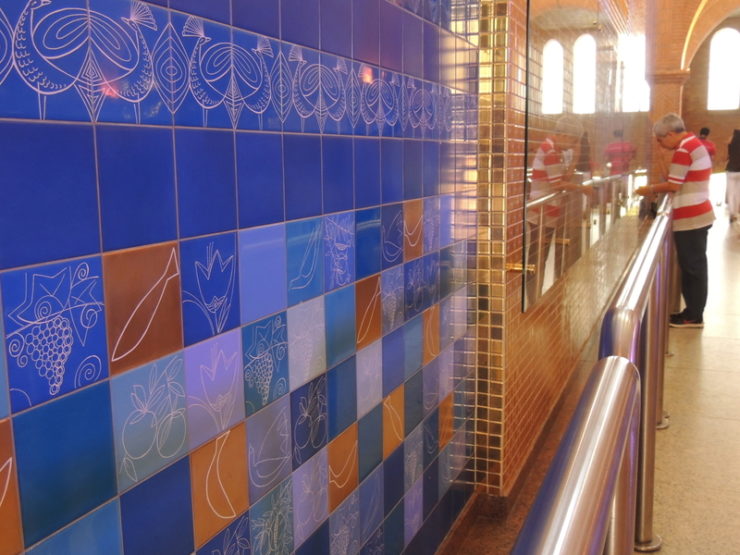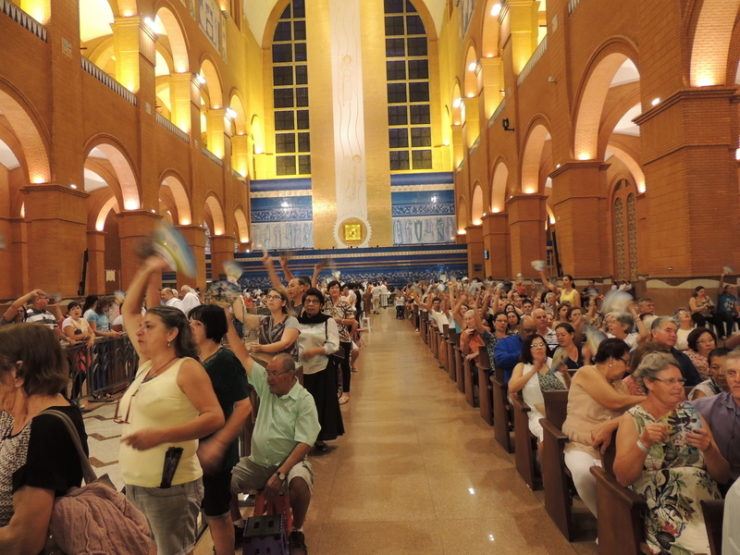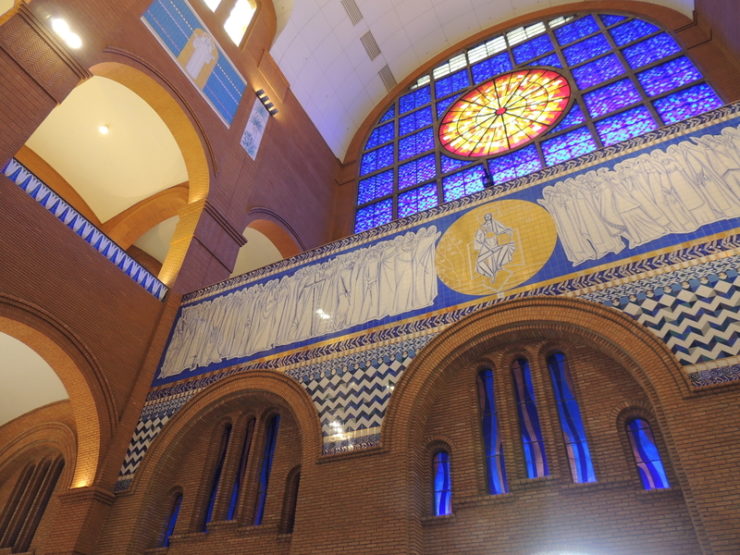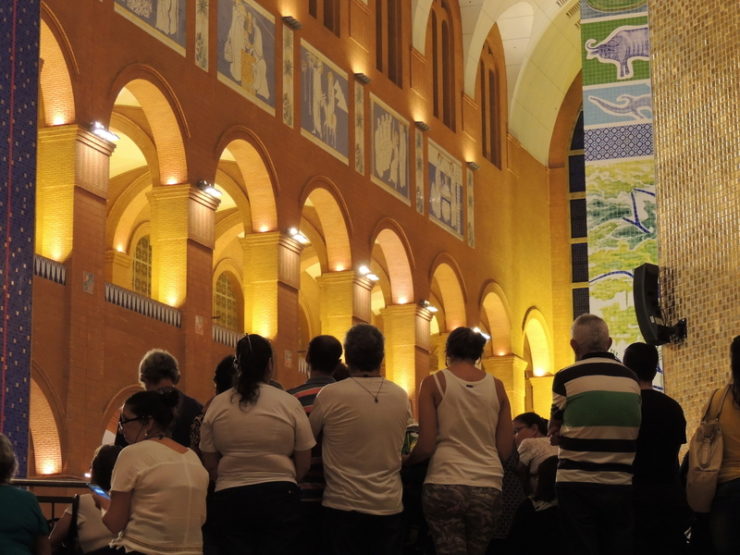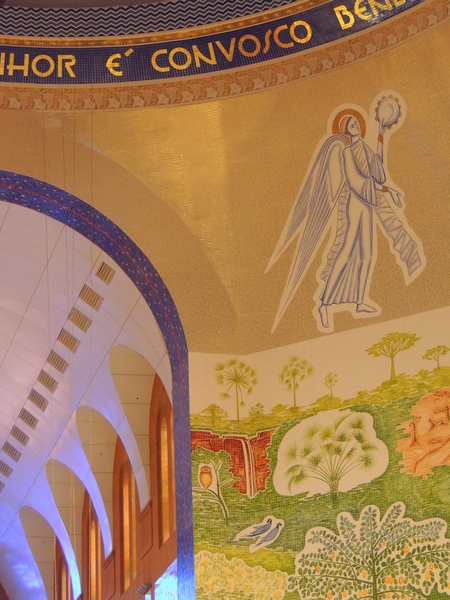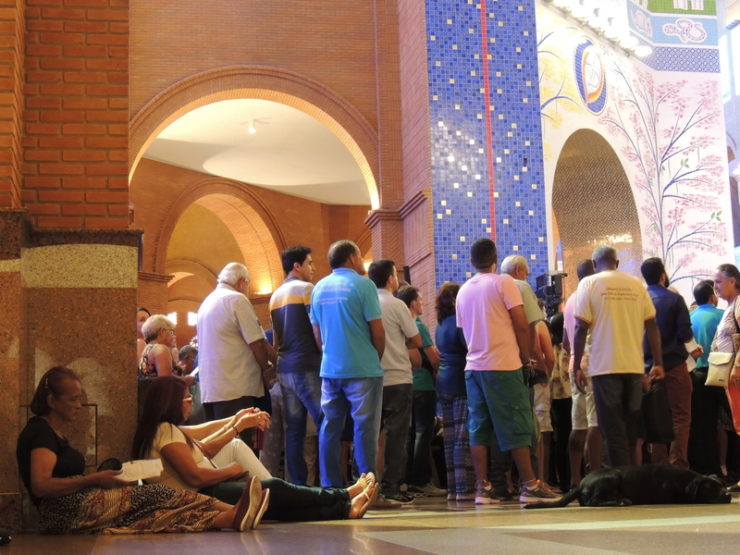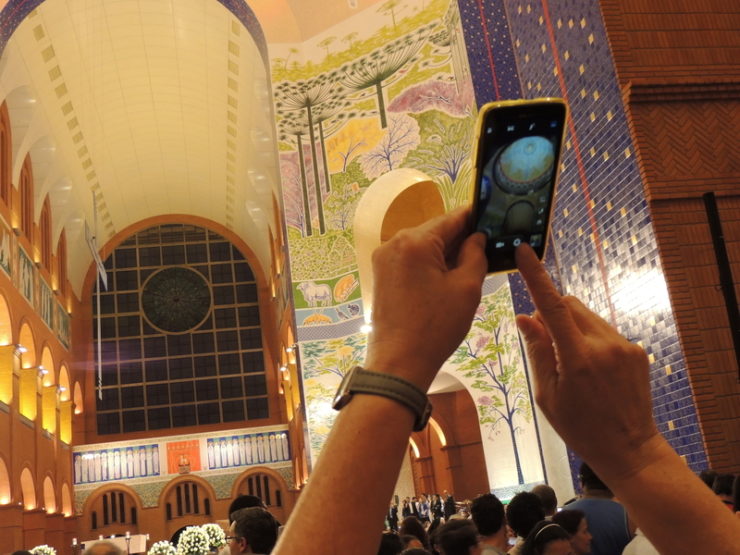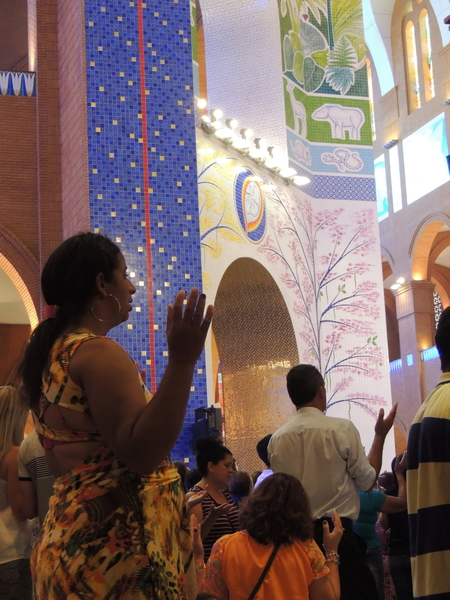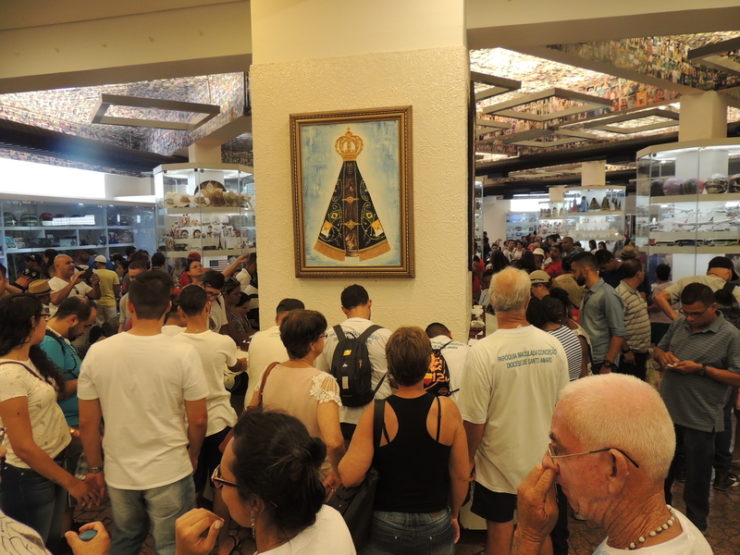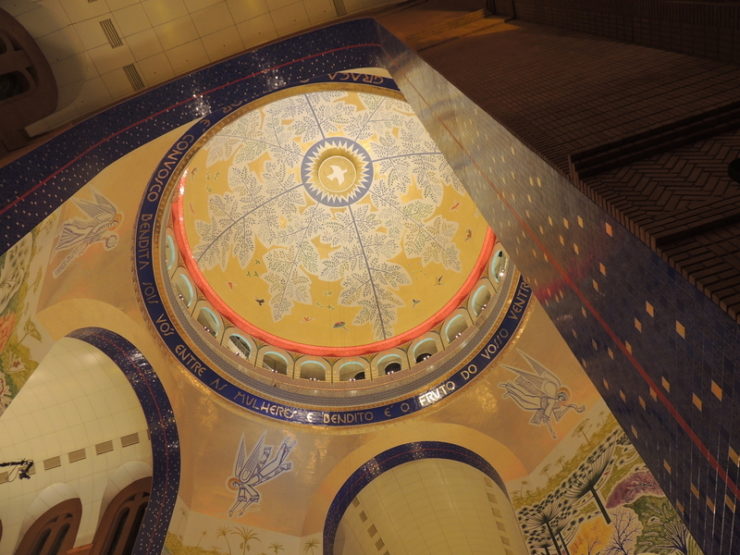Nossa Senhora Aparecida (Our Lady Aparecida) is recognized today as the Catholic patron saint and queen of Brazil with a national holiday in her honor. This religious devotion began in 1717 when three fisherman found a miraculous small statue of a Black Virgin Mary in the Paraiba River at a village in the State of São Paulo. As a result of this event, a baroque church was built to host the original statue, but due to the continuous increasing numbers of visitors (13 million in 2017), a Neo-Romanic mega-church started being constructed in 1954.
My thesis research is about the ongoing construction of the National Basilica of Our Lady Aparecida, considered one of the world’s largest temples, as a powerful Catholic symbol and a monument of nationalism. Through the analysis of its building process, my thesis objective is to understand how it may anthropologically elucidate questions regarding the materiality of religion – mainly on topics such as sacred art, religious spaces, sensational forms and Catholic institutionalization.
Through the photographs I selected for this gallery, I intend to show both how this church is built and used in the present and how the idea of Brazilian Nation, fused with Catholic values, has been materialized in this place. On some walls, we notice drawings of famous men and women who have contributed to the political and religious history of the country. But the Brazilian flag, with its green and yellow colors, is the most evident image of this relation. It can be seen every day decorating the mantle of the original statue as well as on the Basilica’s main door. On special occasions, many other Brazilian flags join the masses during devotional rituals, usually accompanied by the Federation’s State flags.
In the center of the Basilica stand the walls and the dome surrounding the altar. This place, inaugurated in 2016, holds the main artistic project aimed to show how life, as a divine gift, can take many forms in Brazilian territory. Humans are represented by black, white, indigenous and mixed (mestiço) angels, showing how Brazilians were ethnically constituted. In this case, there is a direct relation between the biblical Garden of Eden and the Brazilian fauna and flora. The tile designs are dedicated to all the different Brazilian biomes portraying animals that have become recently, or are almost, extinct. On the dome, we can see exclusively native birds flying around the tree of life. Adam and Eve appear alongside with images of sperms, ovules, fetus and a baby, reaffirming the pro-life and against-abortion political stand of the Catholic Church. Beyond these representative images, the nationalistic discourse is also present in the selection of the materials used. Many walls are covered by ceramic tiles in order to evoke the Portuguese colonization, along with African and Indigenous designs to assert miscegenation. The floors are covered exclusively with Brazilian stones and the benches and altars with Brazilian wood.
Through such artistic projects and clergy rituals, it is possible to say that being Brazilian is synonymous to being Catholic. This is the main message the Catholic Church want to persuade since the country began to witness a vertiginous fall in the number of Catholics – dropping from 91,8% of the population in 1970 to 64,6% in 2010. Holding the title of Capital of Faith, the national shrine both materializes the ideals and political positions of the institutionalized religion and shows how it is fundamental in the construction of a specific kind of nationalism in a colonized country as a constitutive instance.
Captions per picture
1. An external overview of the National Basilica of Our Lady Aparecida
2. The Brazilian flag in front the main door and the steeple under construction
3. Men working on the external building in the north wing of the Basilica.
4. One of the twenty doors in the shape of a hand with five fingers
5. Men working on the internal building in the south wing of the Basilica. The bricks have the same form of the braided baskets of indigenous people and the ceramic tiles are stamped with miracles of the saint.
6. A family observes and takes photos of the original statue of Our Lady Aparecida.
7. A man is praying under the statue of Our Lady Aparecida; the wall is covered by ceramic tiles with stamps of biblical, indigenous and African symbols
8. People attending a mass in the basilica. In the background, you can see the original statue of Aparecida accompanied by the drawings of twelve women mentioned in the Bible before Virgin Mary.
9. One of the murals inside the basilica. Surrounding Jesus Christ is possible to see many women who were part of the religious and political history of Brazilian Catholicism.
10. People attending a mass in the church; on the wall in the background there are murals of the life of Jesus Christ.
11. The black angel is hanging a pandeiro, an Afro-Brazilian musical instrument of percussion. Under his feet, there are some plants and animals of caatinga, a biome of the Brazilian northeast region.
12. People attending a mass near the central altar of the church.
13. People with a dog attending a mass in the church. In the background, you can see an image of a fetus above the trees and under the animals.
14. A man is taking a picture of the dome in its inauguration day. In the background, you can see the biome of the southern region of Brazil.
15. A replica of the statue of Aparecida on the altar after the celebration of her coronation as Queen of Brazil. In the background, the Italian Cardinal with the golden rose that was a gift from Pope Francis to the saint.
16. A woman praying during the coronation of Aparecida. In the background, the image of the fetus composes the cycle of life standing together with plants and animals.
17. People in the Hall of Miracles located in the basement of the Basilica. Some of them donate ex-votos and others write letters thanking Our Lady Aparecida.
18. The newly opened dome. At the center, you can see the dove of Holy Spirit surrounded by the tree of life and the native birds. Also note the white, black and mestiço angels.


